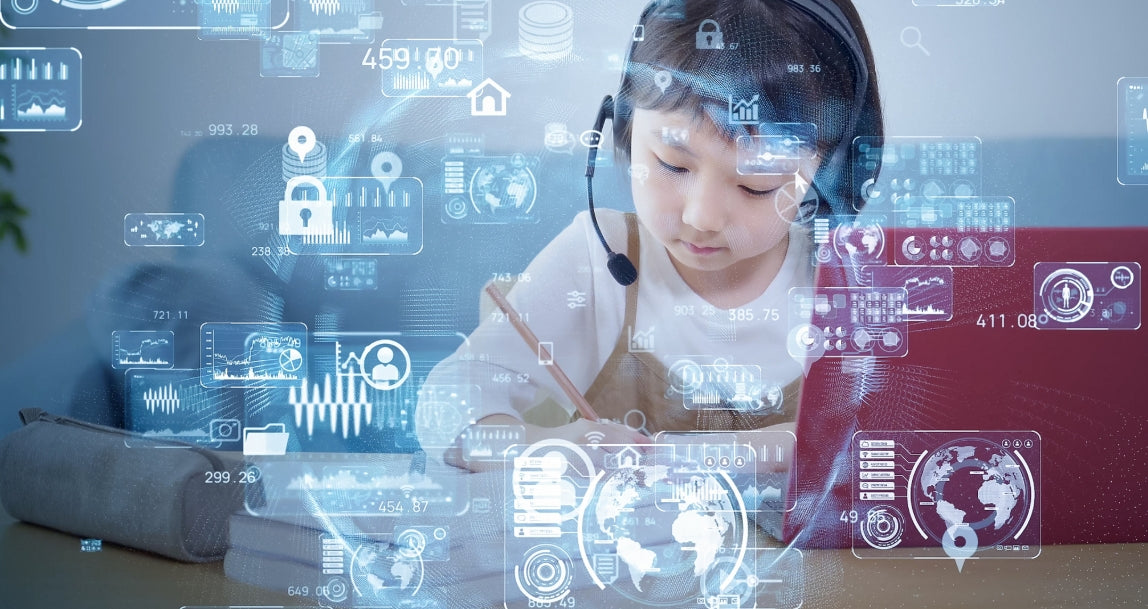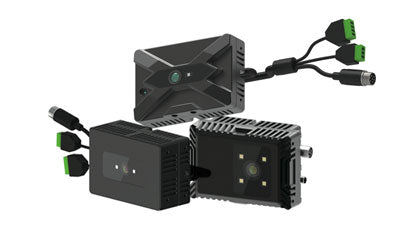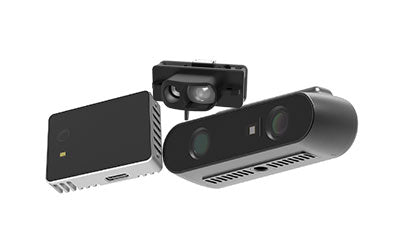Innovative Education & Exhibitions: TOF Powers Immersive Teaching

With rapid technological advancement, traditional education and exhibition methods face unprecedented challenges. Conventional teaching relies heavily on static images and one-way lecturing, making it difficult to engage learners' interest and participation. Exhibitions often lack interactivity, leading to dull experiences. To overcome these limitations, the application of 3D TOF (Time-of-Flight) technology has become a key driver of innovation in education and interactive exhibitions.
What is 3D ToF laser time-of-flight?
3D ToF laser Time-of-Flight is a technology that measures the time it takes for a laser pulse to travel from the emitter to the object and back to calculate distance. It acquires three-dimensional depth information of objects and generates high-precision 3D spatial point clouds, which are widely used in environmental sensing, object recognition, and navigation.
Limitations of Traditional Teaching and Exhibition Experiences
Traditional classrooms primarily use verbal teaching and written materials with limited dynamic displays or multisensory engagement. Students mostly receive knowledge passively, lacking opportunities for active exploration or practice, which diminishes motivation and creativity. Also, there is a lack of real-time feedback on students’ understanding and emotions, making tailored teaching difficult.
Similarly, traditional exhibitions mostly feature static displays and text explanations, with visitors acting as passive observers. This format struggles to capture modern audiences' changing attention and interest, especially among younger groups. The lack of deep interaction reduces immersion and fun, and traditional exhibitions rarely support multi-user simultaneous interaction, limiting collaborative exploration and shared experiences.
Moreover, traditional teaching and exhibitions have low spatial and resource flexibility, requiring fixed venues and physical objects, which are costly to update and maintain, limiting knowledge dissemination.
In summary, the limited interactivity, low participation, absence of feedback mechanisms, and inefficient resource use hinder traditional education and exhibitions from meeting modern demands for efficient, personalized, and immersive learning and cultural experiences. Advanced technologies are essential to break through these barriers.
TOF Enables Dynamic Gesture-Based Teaching and Multi-User Interaction
TOF (Time-of-Flight) 3D depth cameras, with their precise 3D sensing ability, capture real-time human movements and spatial depth information, becoming core technology for dynamic gesture-based teaching and multi-user interaction recognition. Compared to traditional 2D cameras, TOF sensors accurately measure distances between objects and the camera, providing rich 3D spatial data that greatly enhances interaction accuracy and responsiveness.
In education, TOF technology combined with machine vision systems enables recognition of gestures, body movements, facial expressions, and emotions for multiple users simultaneously. For example, students can operate digital teaching aids or virtual labs through natural gestures like waving or tapping without touching screens, offering barrier-free and intuitive interaction. This dynamic gesture interaction boosts students’ enthusiasm and fosters active participation and collaborative learning, improving teaching outcomes.
In exhibitions and museums, TOF 3D depth cameras support simultaneous multi-user interaction. Visitors can trigger detailed information or immersive multimedia content through gestures, breaking the static exhibition model to create lively, fun, and personalized experiences. The system can adjust interactive content automatically based on the number and movements of visitors to ensure the best experience for everyone.
Additionally, TOF’s real-time depth perception opens new possibilities for remote teaching. Teachers and students can interact dynamically through gesture-based controls, facilitating virtual experiments and remote collaboration, enabling educational resource sharing across regions and promoting equitable and intelligent education.
Overall, TOF technology, with its precise 3D sensing and multi-user interaction recognition, overcomes traditional teaching and exhibition limits, providing a solid technical foundation for immersive, interactive educational experiences and becoming a key driver for future smart education and intelligent exhibitions.
Application Cases: Science Museums, Interactive Exhibits, Remote Classrooms
Modern science museums and museums increasingly incorporate TOF 3D depth camera-based interactive devices as new attractions. By accurately capturing visitors’ 3D spatial positions and movement trajectories, exhibits intelligently recognize visitors’ distance, gestures, and behaviors, automatically adjusting display content and interaction modes for truly personalized experiences.
For example, when visitors approach an exhibit, the system plays related videos or projects augmented reality information; specific gestures can instantly switch or expand exhibit details, greatly enhancing fun and engagement. Multi-user interaction supports families, school groups, or tours to participate together, boosting the social and educational value.
In remote classrooms, TOF technology also shows great potential. Remote teaching often lacks face-to-face interaction, but TOF 3D depth cameras capture students’ motions, expressions, and subtle body language, helping teachers better assess understanding and emotions. This dynamic gesture interaction increases online class engagement and facilitates natural, efficient communication.
Accurate motion recognition allows students to remotely participate in experiments, virtual training, or interactive quizzes, combining “hands-on” and “brain-on” learning and enhancing immersion and practicality. Moreover, TOF’s multi-user recognition supports large remote classes with multiple students interacting simultaneously, promoting equitable access to quality education.
In summary, TOF 3D depth camera technology is transforming interactive experiences in science museums, exhibitions, and remote classrooms, driving innovation in education and cultural dissemination and making knowledge sharing smarter, more efficient, and engaging.
Integration with AR/Holographic Displays to Create Immersive Spaces
With the continuous advancement of Augmented Reality (AR) and holographic display technologies, TOF 3D depth cameras have become a crucial core technology for achieving the fusion of virtual and real worlds and creating immersive spaces. By capturing real-time three-dimensional depth information of the surrounding environment, TOF cameras can accurately reconstruct spatial structures and human movements, enabling high-precision perception of the real world. This provides a solid data foundation for precise overlay of AR content and stable projection of holographic images, achieving seamless integration between the virtual and the real.
In immersive teaching scenarios, combining TOF with AR technology allows virtual experimental equipment, historical figures, or scientific models to be accurately projected into the real environment, making students feel as if they are truly inside a real laboratory or historical scene. For example, when studying astronomy, students can see a 3D holographic model of a rotating galaxy through AR holographic displays and interactively explore the model through gestures;
in medical education, 3D holograms of human organs correspond precisely with real body movements, helping students intuitively understand complex anatomical structures and functions. This immersive experience greatly stimulates learning interest and curiosity, effectively improving teaching outcomes.
In exhibitions and museums, the combination of TOF depth sensing and holographic displays enables virtual exhibits to dynamically respond to visitors’ real-time positions and movements, creating interactive displays. Visitors can control holographic images—rotating, zooming, or switching information—using natural gestures without wearing complicated devices, enjoying a visual feast where virtual and real merge. This interactive format not only enhances the fun and engagement of the visit but also enriches the depth and layers of the exhibition content.
Moreover, the integration of TOF with AR holography supports multi-user collaborative interaction, allowing multiple users to share virtual objects in the same immersive space for cooperative learning and discussion, promoting a more open and shared development direction for education and cultural dissemination.
In summary, the deep integration of TOF 3D depth cameras with AR and holographic display technologies provides powerful technical support for creating teaching and exhibition spaces rich in immersion and interactivity, ushering in a new era of smart education and cultural experience.
Vision of Combining Educational Equity and Intelligent Interaction
As an advanced and efficient 3D depth sensing solution, TOF technology, with its continuously decreasing costs and increasing hardware integration, is gradually becoming more accessible and widespread. It is becoming an essential technological support for educational institutions, public museums, and even home learning environments. This means that high-quality interactive teaching equipment can be introduced more broadly, whether in urban or remote areas, significantly narrowing the gap in access to educational resources and helping achieve genuine educational equity.
In the future, intelligent interactive systems powered by Artificial Intelligence (AI) will become the core driving force in education. Based on the rich 3D spatial data and multi-modal sensing capabilities collected by TOF depth cameras, AI can accurately analyze students' learning states, behavioral performance, and emotional reactions, adapting teaching content and pacing accordingly to provide personalized tutoring. Whether in classroom teaching or remote education, teachers can obtain more detailed feedback on students, quickly identify learning difficulties and needs, and implement targeted guidance, thereby improving teaching quality and efficiency.
Furthermore, the application of multi-modal data fusion technology will make human-computer interaction more natural, smooth, and intelligent. TOF cameras not only capture body movements but can also be combined with speech recognition, facial expression analysis, and haptic feedback technologies to build multidimensional interactive experiences. Students will be able to interact seamlessly with teaching systems through gestures, voice, eye gaze, and other means, breaking the limitations of traditional input devices and enhancing learning initiative and enjoyment. Intelligent teaching aids, virtual laboratories, and AR/VR immersive scenarios will become popularized new educational forms, bringing unprecedented experiential upgrades.
More importantly, the deep integration of TOF and intelligent interaction technology helps build an open and inclusive digital education ecosystem. Educational content and resources can be shared and personalized through cloud platforms, forming collaborative interactive networks among teachers, students, parents, and administrators that promote knowledge flow and experience exchange, creating a virtuous cycle. Especially in special education and lifelong learning fields, intelligent interaction technology will play a significant role in helping learners from diverse backgrounds and with various needs gain fair and high-quality educational opportunities.
In conclusion, the combination of TOF technology and intelligent interaction not only elevates educational technology levels and teaching effectiveness but also opens broad prospects for achieving educational equity and promoting digital education ecosystem construction. With ongoing technological maturation and expanded application scenarios, intelligent interactive education will become an accessible new norm for all.
In summary, the deep integration of 3D TOF cameras with machine vision, SLAM technology, AR holographic displays, and other cutting-edge technologies is revolutionizing traditional education and exhibition experiences. As a key component of 3D vision systems, TOF empowers immersive teaching and interactive exhibitions, driving smart education and intelligent cultural industries to new heights.
Synexens 3D Of RGBD ToF Depth Sensor_CS30
Our professional technical team specializing in 3D camera ranging is ready to assist you at any time. Whether you encounter any issues with your TOF camera after purchase or need clarification on TOF technology, feel free to contact us anytime. We are committed to providing high-quality technical after-sales service and user experience, ensuring your peace of mind in both shopping and using our products.





